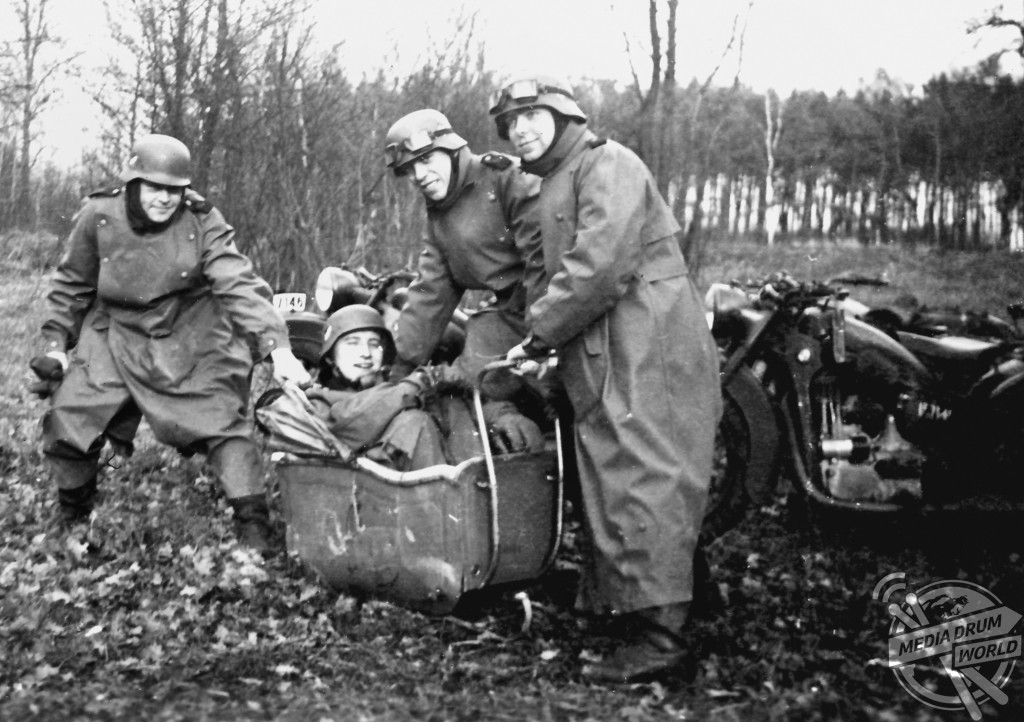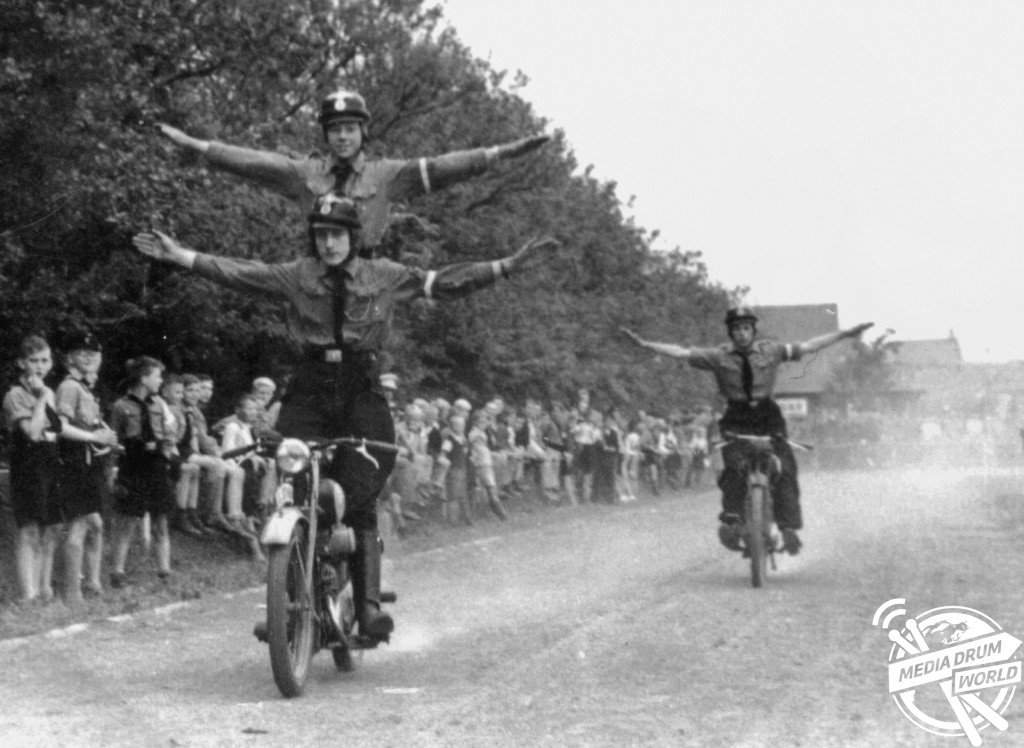
By Liana Jacob
FASCINATING photographs showing the motorcycles and the death-defying stunts some soldiers took part in during WW2 have been revealed in a new book.
The incredible pictures show the various thick outfits that cover the soldiers from their neck to the ground, with helmets and goggles on them.
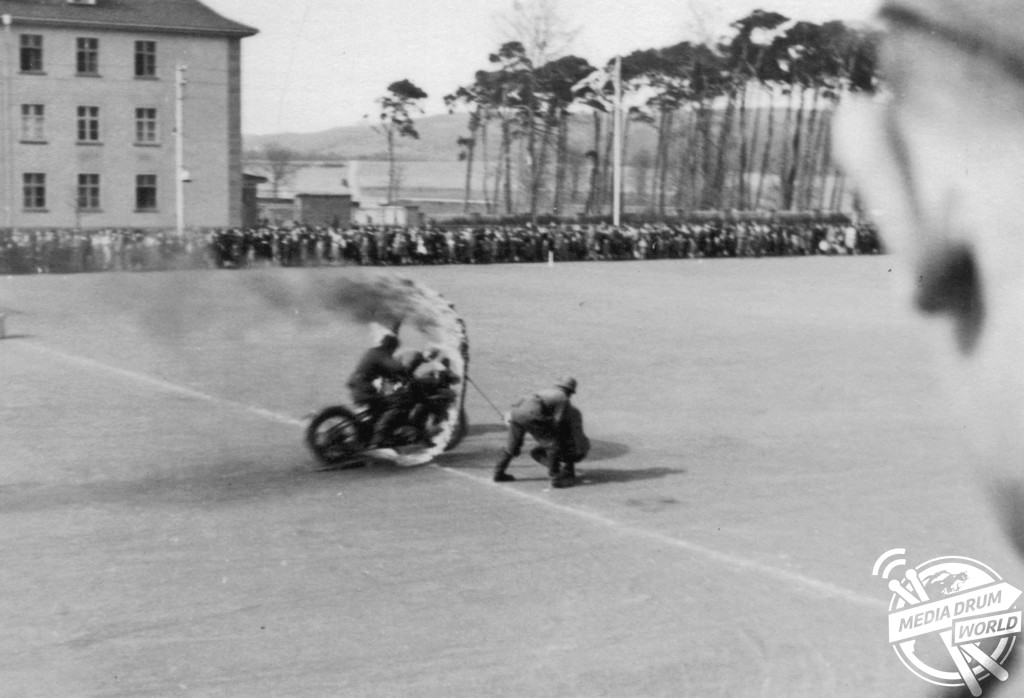
Other images depict the dangerous stunts, with some soldiers using motorcycles to jump through flaming hoops for the Home Front and bursting through a 1938 newspaper.
Another picture shows a typical German sidecar with a French girl sitting in it, and German troops being transported by tanks and a horse-drawn carriage.
The captivating retro photos are part of a book called Two-Wheeled Blitzkrieg by writer, Paul Garson. It is published by Amberley Publishing.
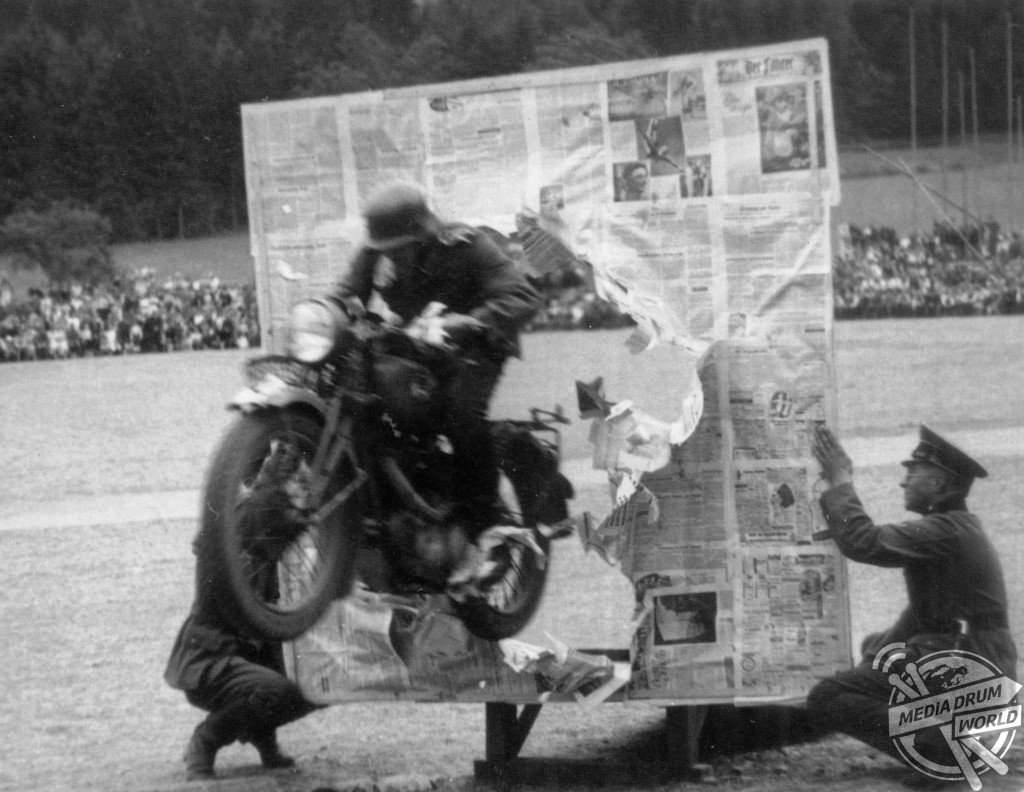
“Motorcycles have been going to war as long as there have been motorcycles around to go to war,” Paul said.
“They were recruited for the battlefield thanks to their merits of speed, manoeuvrability and adaptability as a weapons platform – not to mention their cost effectiveness when compared to other mechanized implements of modern warfare.
“By the beginning of the twentieth century, motorcycle production was a worldwide phenomenon, establishing iconic marques.”
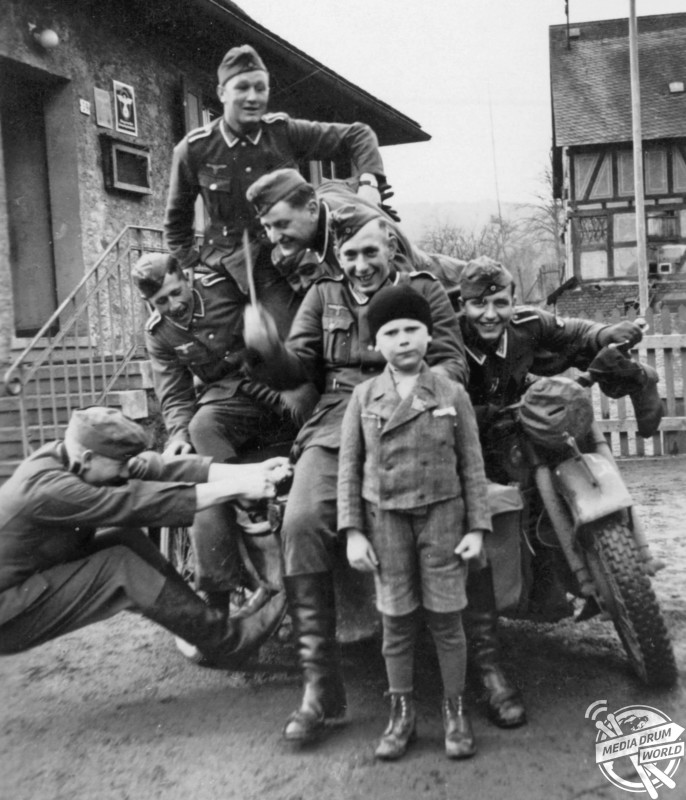
During the Second World War, the Army produced a specification for a motorcycle like BMWs used by German forces.
Harley-Davidson started producing the WLA in small numbers in 1940, as part of a general military expansion.
The later stages of the United States into World War II saw significantly increased production, with over 90,000 being produced during the war.
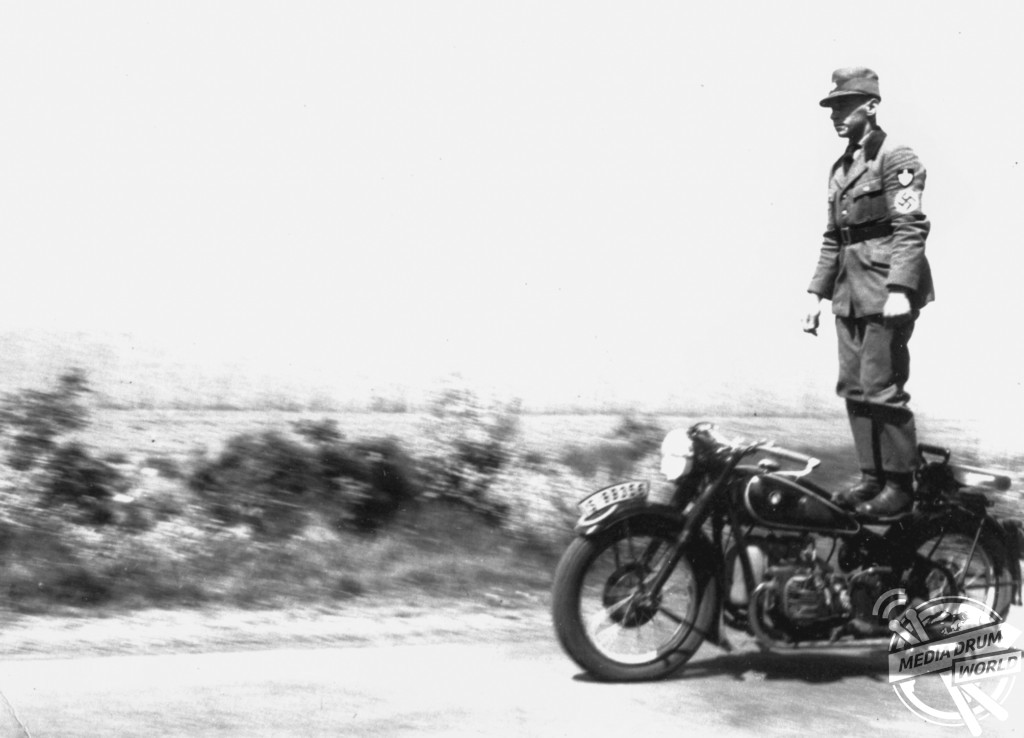
“Motorcycles were first introduced into the German military arsenal in 1904 when fourteen NSU machines appeared during the Imperial Manoeuvres,” Paul said.
“By 1911, with the addition of sidecars that could carry additional men, weapons and material, some five-thousand-four-hundred machines joined the German army during the First World War of 1914–18.”
Two-Wheeled Blitzkrieg is published by Amberley Publishing and is available here: https://www.amberley-books.com/two-wheeled-blitzkrieg.html
